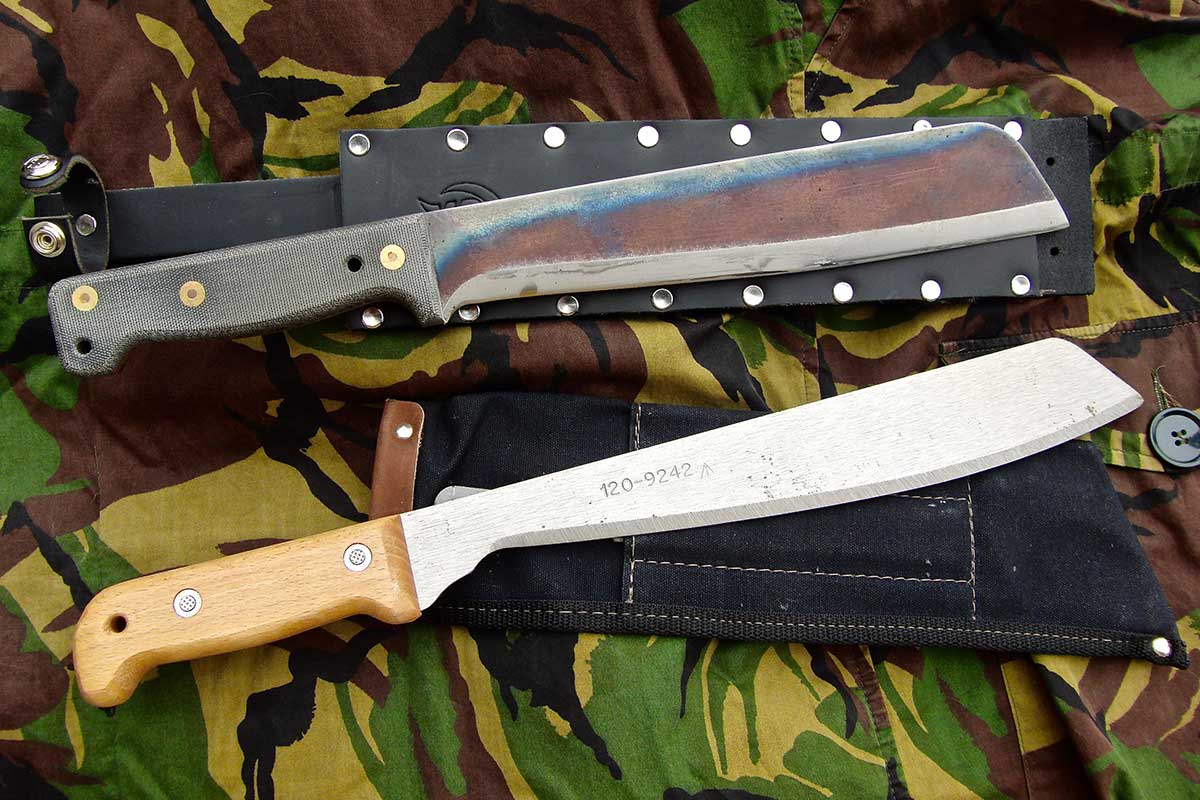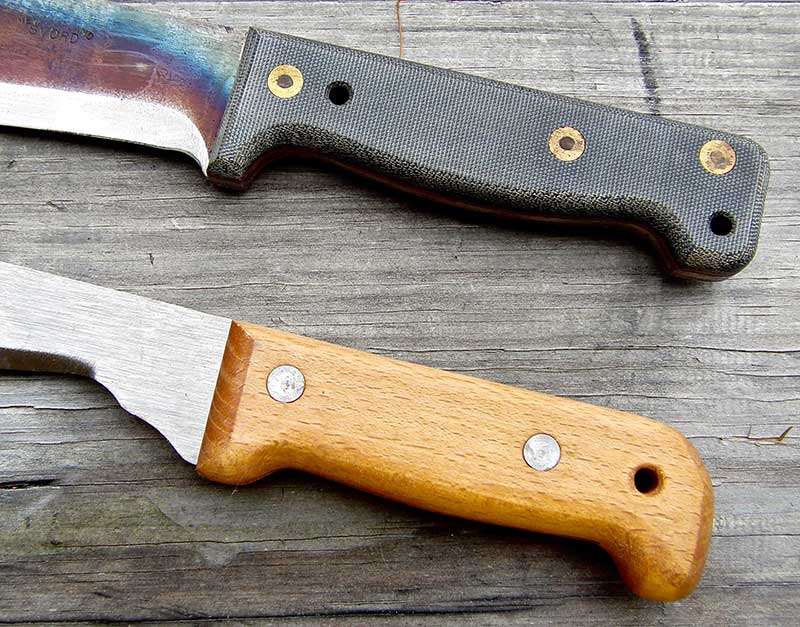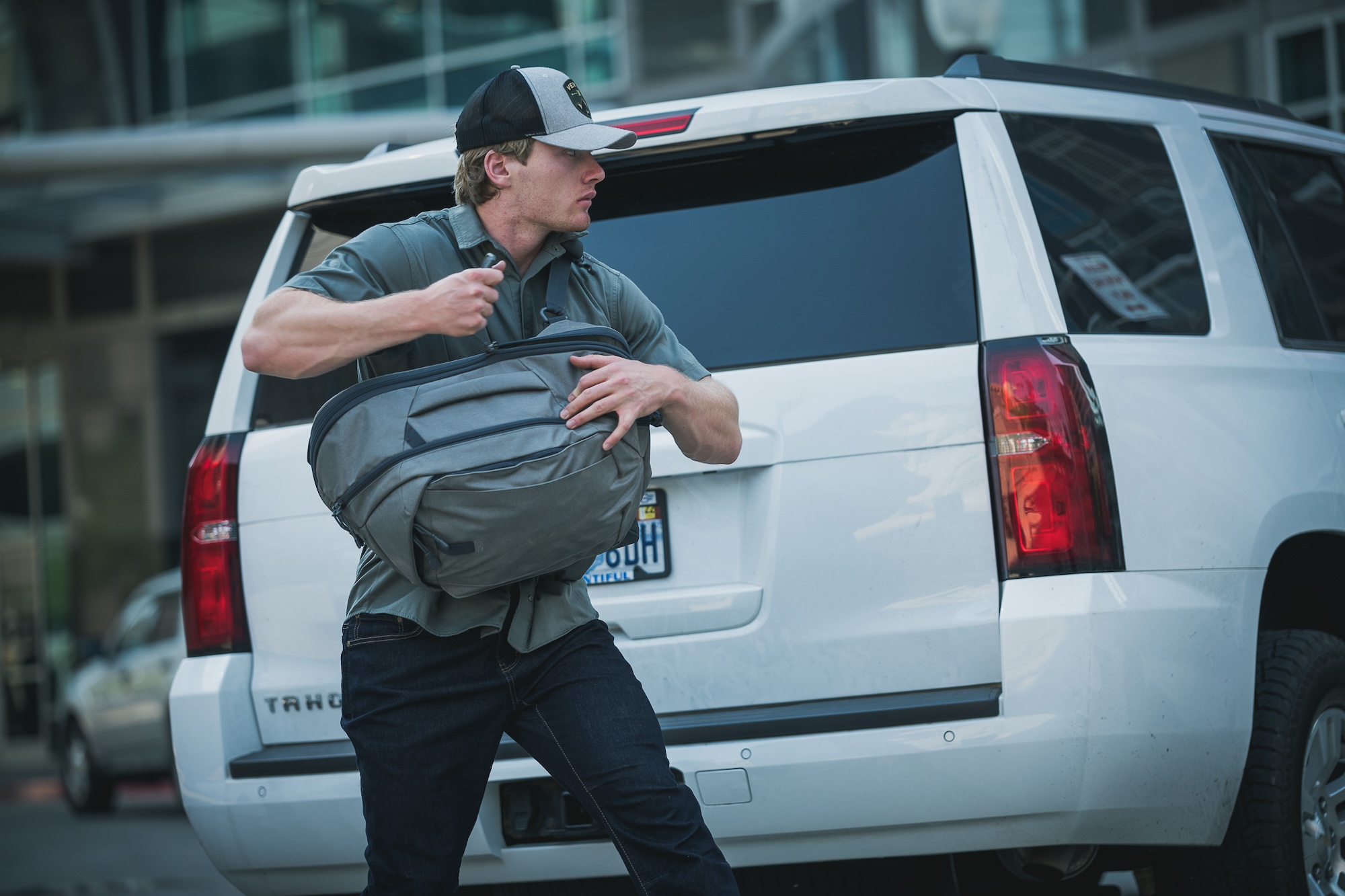
AC-012821-GoLock-G-1-800
Many of you will recognize the name “Lofty Wiseman” as the author of Survive Anywhere Safely, although for some reason when the book was first published in the U.S., the title was changed to Survive Safely Anywhere by some moronic editor who appears not to have recognized that the initials “SAS” refer to the Special Air Service.
Anyway, Lofty had been here in the States working with me on a hostage rescue training course for U.S. military personnel and stopped off at my house for a few hours while waiting for his flight back to the U.K.
As I was proudly showing him some of my custom-made combat/survival knives, he frankly told me he didn’t think any of them measured up to the Golok that was widely used by the SAS.
The Golok is similar to a machete but more versatile and
originates from the area of Malaya, Indonesia, and the Philippines,
though each region may use slightly different versions.
I had handled a Golok but never really used one, and vowed to do so. The Golok is similar to a machete but more versatile and originates from the area of Malaya, Indonesia, and the Philippines, though each region may use slightly different versions.
In general, the Golok is shorter and heavier than the typical machete. Its edge is usually convex, which makes the blade less likely to get caught in green wood. Though still used to cut bush or branches, the Golok also functions well for other general outdoor tasks.
As far as I know, the SAS began using the Golok in Malaya and Borneo and has continued through today. I should note that the SAS has also been issued a pure fighting knife—the UKSF—for the War on Terror.
In addition to the British SAS, the Australian and New Zealand SAS, both of which have a jungle mission, also favor the Golok.
MARTINDALE GOLOK
One Golok used by the British SAS is the Martindale Crocodile model, which has a 13-inch blade that makes it easy to carry and makes it very lively in the hand. Though not intended as a combat knife, the Martindale in skilled hands can be useful in close combat.
A hardwood handle is well designed to allow a solid grip, though I would prefer if it were more textured to avoid slippage. It is pinned securely to the tang and incorporates a hole for a lanyard or wrist thong. The blade is carbon steel and takes an edge well. A thick spine on the blade makes the Martindale durable and also allows it to be used for light hammering. Weight is 20 ounces.

Martindale sheath (left) is very basic and does not incorporate a strap to secure the blade. It does include a sharpening file and pocket for it. Svord sheath (right) has a retention strap and three holes at the bottom of the sheath to allow lashing to web gear.
My Martindale came with a sheath that incorporates a pocket for a file to keep the blade sharp. In my experience, the Martindale will take a fairly good edge, but you have to work at it. Also my sheath did not come with a retention strap, so the Golok is likely to fall out if climbing at a steep angle.
Another advantage of the Martindale Golok is that it is reasonably priced—under $50 in the U.S.
SVORD GOLOK
I own another Golok from Svord Knives in New Zealand. I am not certain whether the Australian and New Zealand SAS issue this Golok, but it was recommended to me by a friend who was a veteran of the SASR (Australian Special Air Service Regiment). Since the Svord Golok is relatively expensive (three to four times the price of the Martindale), the Martindale may be more widely used by Aussie and NZ troops.
The “British Army Pattern Golok” as produced by Svord has a very thick, sturdy blade that should stand up to hard use. At 11 inches, the blade is shorter than that of the Martindale but thicker.
Constructed of Swedish high-carbon steel, the Svord Golok’s blade is individually hardened and tempered, then ground with a water-cooled stone to produce a convex razor edge. As with the Martindale, the top of the Svord’s blade is thick enough to allow light hammering. The Svord’s Micarta handle is non-slip and comfortable.
It incorporates two holes for a lanyard and/or wrist strap. Special ops troops will often lash their utility blade to their web gear or belt to prevent loss when climbing, parachuting, or carrying out water ops.

Top: Svord Golok. Bottom: Martindale Golok. Even though both are Goloks, they have notable blade differences.
As with the Martindale Golok, the Svord Golok is not intended as a combat knife, though it can perform that function if necessary. It is certainly heavy enough to deliver an incapacitating strike to an enemy. However, I actually find that the slimmer Martindale blade is faster in the hand should it be used for close combat.
Surprisingly, when I compared weight, the Martindale is a couple of ounces heavier than the 17-ounce Svord. The longer Martindale blade distributes weight better.
The sheath that comes with the Svord Golok is of heavy leather construction and comes with a retention strap around the handle. I would definitely rate this as a plus over the Martindale. Three holes at the bottom of the sheath allow it to be lashed to the user’s gear in a variety of ways.
I mostly keep my two Goloks in my reference collection of knives, but I have carried the Martindale in my truck at various times in case I wanted to clear light brush or limbs. The few tasks I asked it to perform, it performed satisfactorily.
One reason I chose it to carry in my truck was that if it got lost or stolen, I could replace it relatively inexpensively. I think for any of you thinking of purchasing a Golok, the price difference between the Martindale and the Svord will be a consideration.
The Svord seems to be a very durable blade, though I’ll admit I have not abused it in use to test that. Honestly, I’ve only mildly abused the Martindale, but I have seen Martindales that have stood up to hard usage.
I think for many, including me, part of the appeal of the Golok is that it has been the choice of some of the world’s finest special operations soldiers. That’s a good recommendation.















